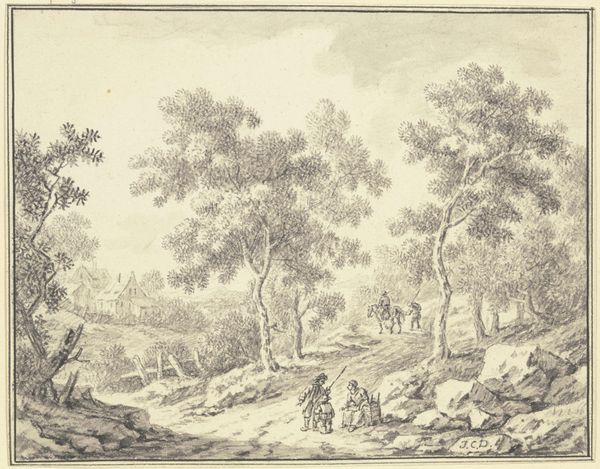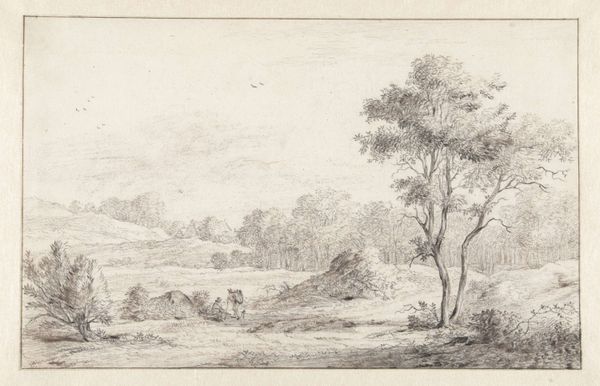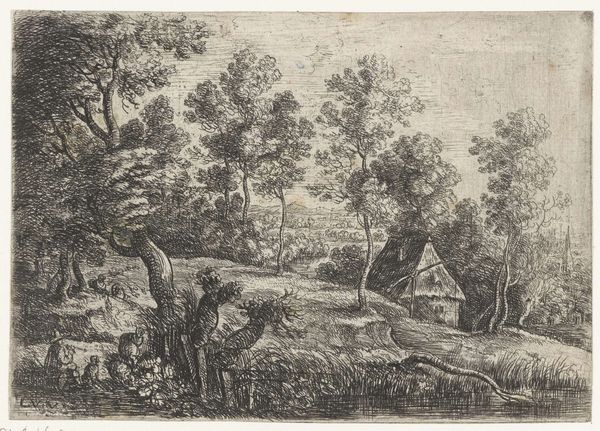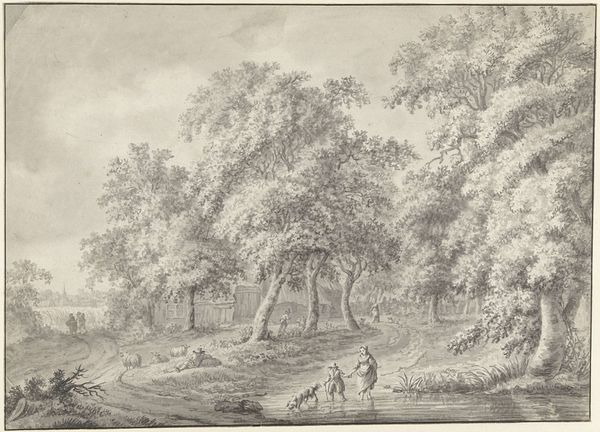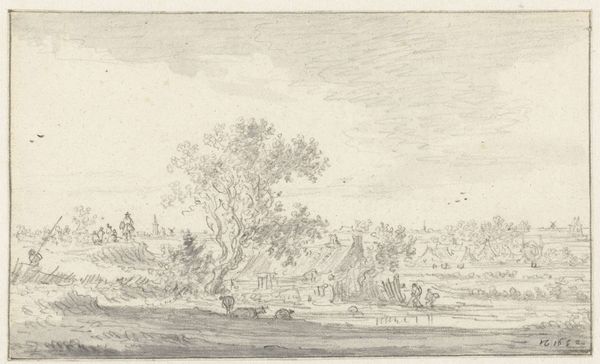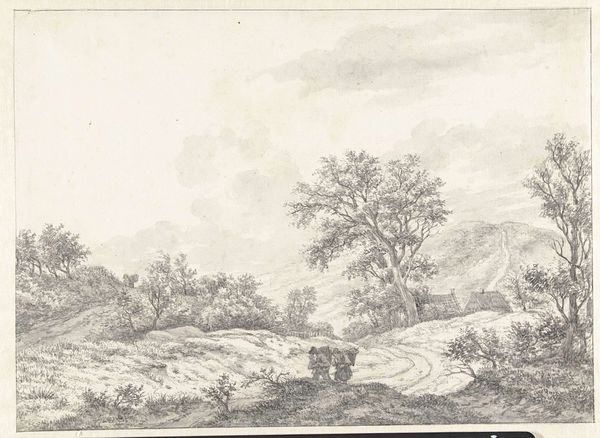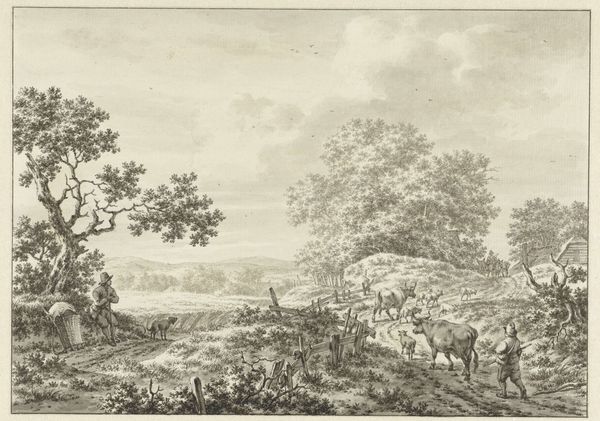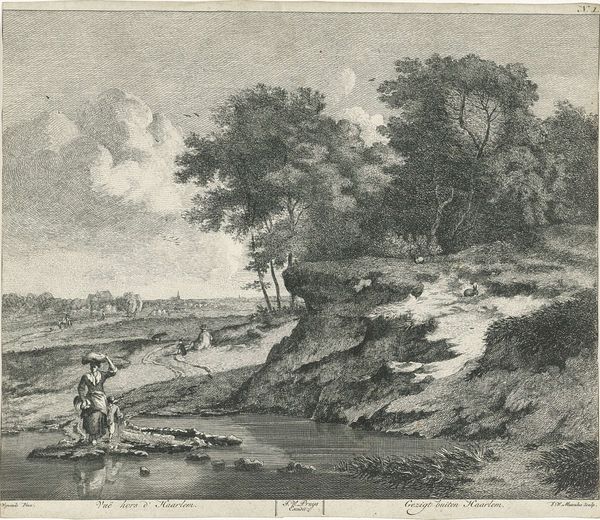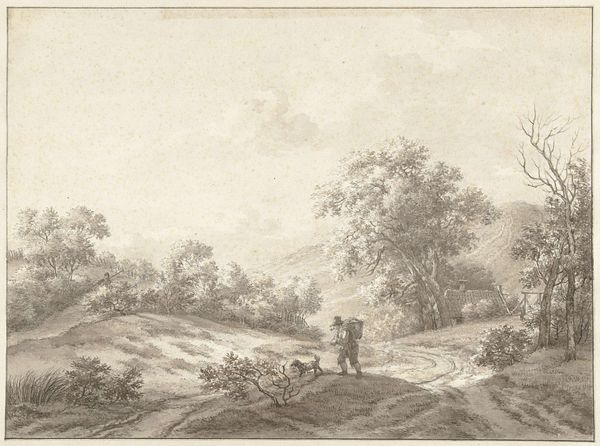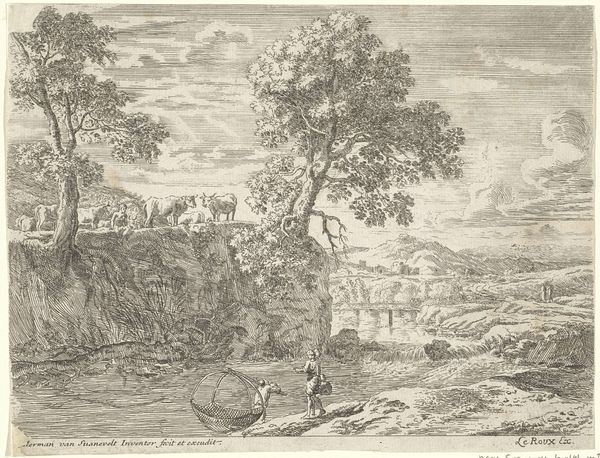
Dimensions: height 146 mm, width 190 mm
Copyright: Rijks Museum: Open Domain
Editor: So, we're looking at "Resting and Walking Figures in a Wooded Landscape" by Johann Christoph Dietzsch, likely made sometime between 1720 and 1769, rendered in pencil. It has a certain peaceful, almost timeless quality, with these figures seemingly lost in the woods. What stands out to you when you look at it? Curator: The immediate thing I see is the directness of the pencil on paper. Look at how the artist is foregrounding process, not hiding the means of production. Think about where this was made – probably within a workshop, definitely connected to larger social and economic systems. This isn’t just about ‘artistic expression’. It’s labour. Do you see how the drawing depicts a social hierarchy, or a division of labor within the landscape itself? Editor: That's interesting, I hadn't considered it that way. The figures in the foreground seem more detailed, maybe wealthier, than the indistinct ones deeper in the woods. I was so focused on the 'romanticism', which is what the tags suggest, I missed that. Curator: Romanticism plays a part, certainly in the idealized view of nature. But who had access to that view? Pencil, paper – these were commodities. Consider the economics of landscape art. This idyllic scene naturalizes a system of production and consumption. It asks us to find beauty without questioning who benefits from it. Who is resting, who is walking, and why? Editor: So, the artwork isn’t just portraying a scene, but embedding a whole social and economic reality into its very fibers... or rather, its graphite strokes? Curator: Exactly. And think about how we consume art now. Is it really any different? We’re still participating in a system that values certain types of labor and certain modes of production over others. This pencil drawing reminds us to be critical of what we see and to ask 'who made this, how, and for whom?' Editor: This has really changed my perception of what I initially thought was just a tranquil landscape drawing. It highlights how the very materials and the way they’re used can tell a much bigger story about society and power. Curator: Precisely. And by recognizing that, we gain a deeper understanding of both the artwork and our place within that ongoing story.
Comments
No comments
Be the first to comment and join the conversation on the ultimate creative platform.
